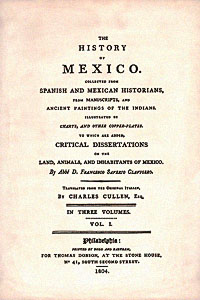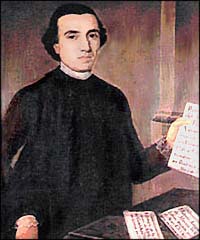|
140 HISTORY OF MEXICO.
The Mazahuas were once a part of the nation of the Otomies, as the languages of both nations are but different dialects of the same tongue; but this diversity between two nations so jealous of preserving their idioms uncorrupted, is a clear argument of the great antiquity of their separation. The principal places which they inhabited were on the western mountains of the vale of Mexico, and formed the province of Mazahuacan, belonging to the crown of Tacuba.
The Matlatzincas made a considerable state in the fertile vale of Toluca; and, however great, anciently, their reputation was for bravery, they were, notwithstanding, subjected to the crown of Mexico, by king Axayacatl.
The Miztecas and Zapotecas peopled the vast countries of their name, to the south-east of Tezcuco. The numerous states into which these two countries were divided, continued a long time under several lords or rulers of the same nations, until they were subdued by the Mexicans. Those nations were civilized and industrious; they had their laws, exercised the arts of the Mexicans, and made use of the same method to compute time, and the same paintings to perpetuate the memory of events, in which; they represented the creation of the world, the universal deluge, the confusion of tongues; although the whole was intermixed with various fables (z). Since the conquest, the Mixtecas and Zapotecas have been the most industrious people of New Spain. While the commerce of silk lasted, they were the feeders of the worms; and to their labours is owing all the cochineal, which
__________
some city of Spain? The resurrection of the princess is a fable founded on the
memorable occurrence, respecting the sister of Montezuma, of which we shall speak hereafter
(z) See the work of Fra Gregerio Garzia Dominicano, entitled, the Origin of the Indians, in book v. chap 4. concerning the mythology of the Miztecas
HISTORY OF MEXICO. 141
for many years, until the present time, has been imported from Mexico into Europe.
The Chiapanese have been the first peoplers of the New World, if we give credit to their traditions. They say that Votan, the grandson of that respectable old man who built the great ark to save himself and family: from the deluge, and one of those who undertook the building of that lofty edifice which was to reach heaven, went, by express command of the Lord, to people that land. They say also that the first peoplers came from the quarter of the North, and that when they arrived at Soconusco, they separated, some going to inhabit the country of Nicaragua, and others remaining in Chiapan. This country, as historians say, was not governed by a king, but by two military chiefs, elected by priests. Thus they remained until they were subjected by the last kings of Mexico to that crown. They made the same use of paintings as the Mexicans, and had the same method of computing time; but the figures with which they represented days, years, and months, were totally different.
Of the Cohuixcas, the Cuitlatecas, the Jopas, the Mazatecas, the Popolocas, the Chinantecas, and the Totonacas, we know nothing of the origin, nor the time when they arrived in Anahuac. We shall say something of their particular customs when ever it will illustrate the history of the Mexicans.
But of all the nations which peopled the region of Anahuac, the most renowned and the most signalized in the history of Mexico, were those vulgarly called the Nahuatlacas. This name, the etymology of which we have explained, in the beginning of this history, was principally given to those seven nations, or rather those seven tribes of the same nation, who arrived in that country
142 HISTORY OF MEXICO.
after the Chechemacas, and peopled the little islands, banks, and boundaries of the Mexican lakes...
(the remainder of this text has not been transcribed)
|


